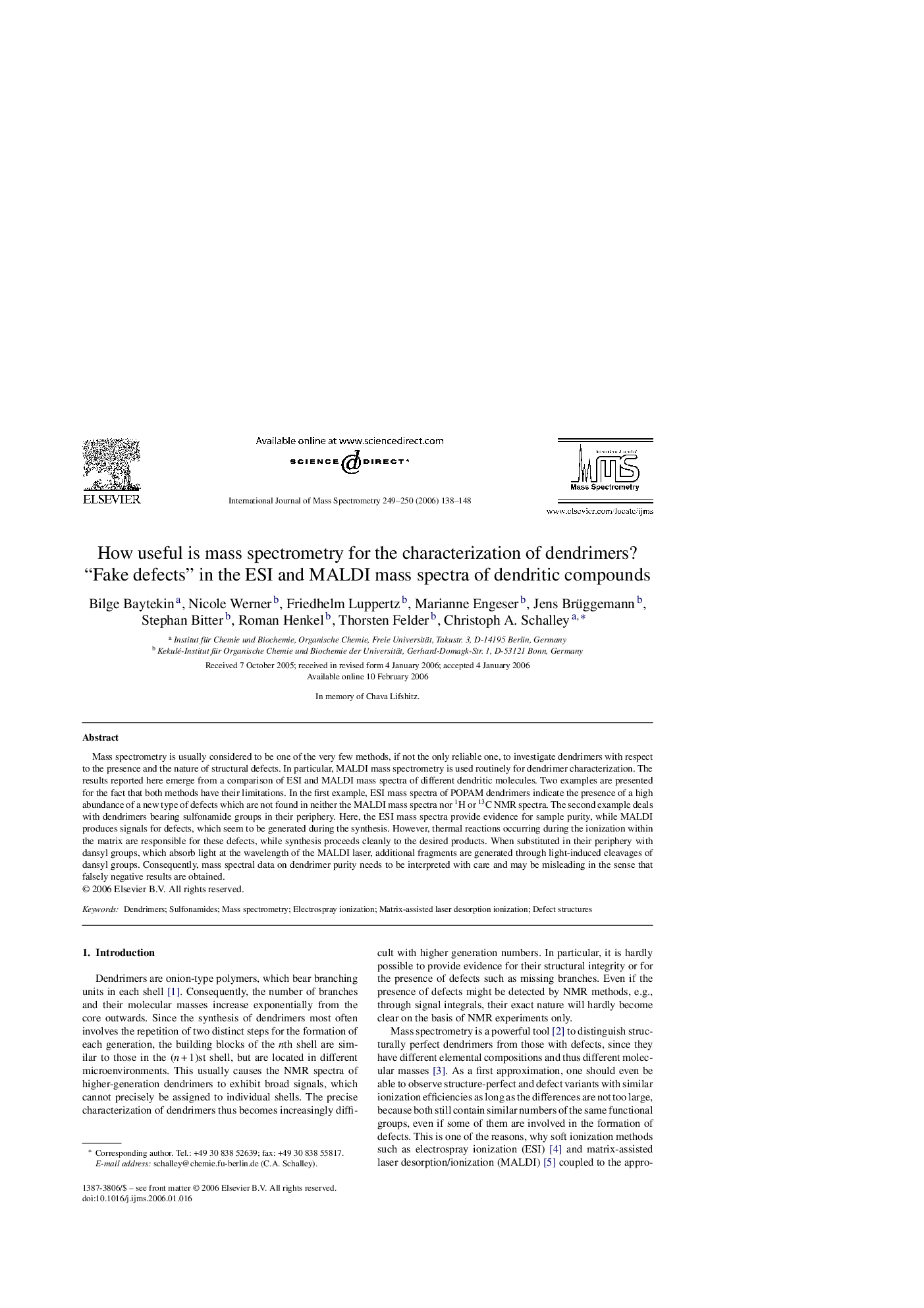| Article ID | Journal | Published Year | Pages | File Type |
|---|---|---|---|---|
| 1194306 | International Journal of Mass Spectrometry | 2006 | 11 Pages |
Mass spectrometry is usually considered to be one of the very few methods, if not the only reliable one, to investigate dendrimers with respect to the presence and the nature of structural defects. In particular, MALDI mass spectrometry is used routinely for dendrimer characterization. The results reported here emerge from a comparison of ESI and MALDI mass spectra of different dendritic molecules. Two examples are presented for the fact that both methods have their limitations. In the first example, ESI mass spectra of POPAM dendrimers indicate the presence of a high abundance of a new type of defects which are not found in neither the MALDI mass spectra nor 1H or 13C NMR spectra. The second example deals with dendrimers bearing sulfonamide groups in their periphery. Here, the ESI mass spectra provide evidence for sample purity, while MALDI produces signals for defects, which seem to be generated during the synthesis. However, thermal reactions occurring during the ionization within the matrix are responsible for these defects, while synthesis proceeds cleanly to the desired products. When substituted in their periphery with dansyl groups, which absorb light at the wavelength of the MALDI laser, additional fragments are generated through light-induced cleavages of dansyl groups. Consequently, mass spectral data on dendrimer purity needs to be interpreted with care and may be misleading in the sense that falsely negative results are obtained.
